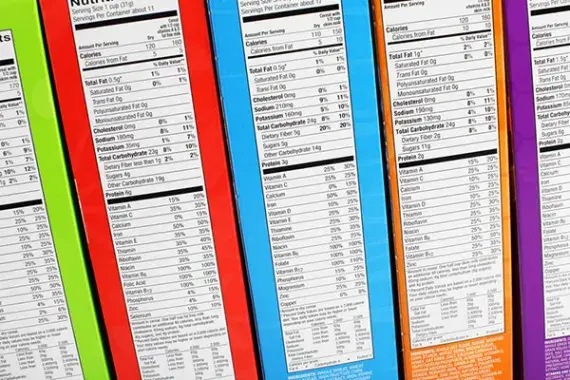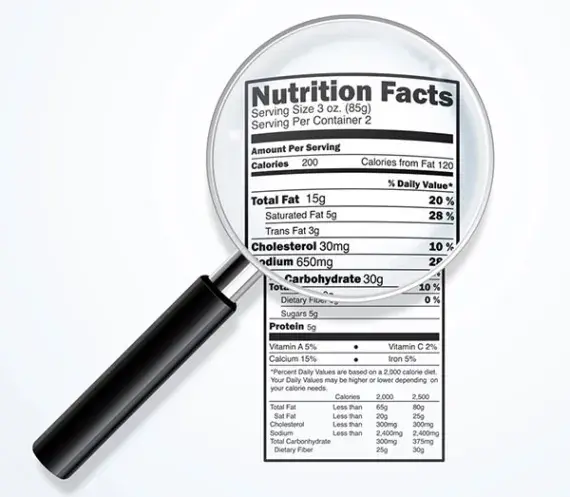By Lindsey Joe, Registered Dietitian Nutritionist
If all foods could live up to the claims they make on their packaging, we'd be one healthy population! Unfortunately, food and nutrition labels often cause much confusion for grocery shoppers. In fact, nearly 59% of consumers have a hard time understanding nutrition labels. Here are 9 food labels and claims you don't want to get tricked by.
- Serving Sizes. Let's start at the top of the Nutrition Facts! I hate to break it to you, but the whole package does not always equal one serving. Rather, an entire package may contain multiple servings, making the total nutrients you consume (calories, fat, carbohydrates, protein, etc.) much more than what you think! When it comes to reading food labels, always start at the top with the serving size so you can make a more informed decision about what to (or not to) eat.
- Low-fat or Fat-free. Just because a product says that it contains less or even no fat doesn't mean you should eat more of it. (Same goes for the term "lite" or light".) In fact, a product is legally allowed to claim it's "fat-free" even though it still may contain up to 0.5 grams of fat per serving. This is especially alarming when it comes to saturated and trans fats, the un-heart-healthy fats known to increase your risk of developing heart disease.
- Made with sea salt. The truth is, both table salt and sea salt have about the same amount of sodium in them per serving. Regardless of which you choose, you should aim to keep your sodium intake to no more than 1,500 milligrams per day (that's less than 3/4 teaspoon per day), which has been shown to significantly reduce blood pressure!
- Lightly sweetened. The FDA has no definition for this misleading term, so buyers beware! Instead, follow the Y's very own Healthy Eating Physical Activity guideline of choosing foods free of sugar as one of the first three ingredients or that contain less than eight grams of added sugar per serving.
- Wheat or Multi-Grain. Just because the package says "wheat" or "multigrain" does not make it whole grain. Check the package for "100% whole grain" or "100% whole wheat." You can also look for "whole" listed before the first ingredient in the Ingredients List.
- Natural. Products labeled "natural" don't immediately equal healthy. Even junk food can come with a natural label if "nothing artificial or synthetic (including all color additives regardless of source) has been included in, or has been added to, a food that would not normally be expected to be in that food," according to the FDA. This means even food products that are high in sugar, fat and salt can make this confusing claim.
- Made with real fruit. Even if the food product contains real fruit (versus fake fruit?) it may only be in minute amounts. So this claim doesn’t mean much. Better to stick to fruits you can actually see!
- Gluten-free.What's wrong about this label is that there are many food products that proclaim they are "gluten-free" without ever containing gluten in the first place! Unless you have been told by your doctor that you have gluten intolerance or Celiac disease, then gluten-free products may be causing you to miss out on essential nutrients!
- Superfoods and Superfruits. All plant-based foods are packed with vitamins, minerals and nutrients that are super for you. There is not one fruit or vegetable that supersedes the others. So, don't let these superlatives deceive you.
No matter what food claim you find on a package, be sure to investigate the Nutrition Facts and Ingredient List to see what's really inside.
Establish Healthy Habits with the Y
Hungry for more? Check out Lindsey Joe's Healthier, Homemade Pumpkin Spice Coffee. You can also learn about nutrition counseling classes offered at a Y near you by Lindsey and our experienced team of RDs. Let us partner with you in reaching your wellness goals!


